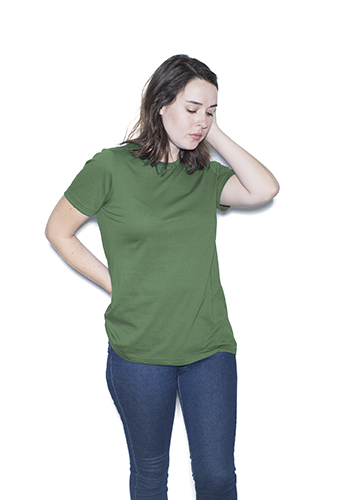Direct-to-garment (DTG) printing is unique among garment decorating techniques because the garments will, in part, determine the quality of the final image. In other words, printing on a suitable garment will give you the potential for a perfect, bright, vibrant image. Printing on an unsuitable garment will result in a less-than-ideal image, regardless of the other variables you change. This goes beyond printing on 100% cotton, the ideal substrate for any DTG inkjet printer. In addition, you need a tight fabric weave and smooth surface for best results.
As an example of the proper garment, we’ve test printed on an American Apparel Fine Jersey Classic Woman’s T-shirt (style 23215ORG). This garment is made of 100% fine ring-spun organic cotton with a fabric weight of 4.3 ounces. In this example, we’ve printed white and black garments.
For our test prints, we used the Epson F2000 DTG printer and a clam-shell heat press with auto release. For the dark garment, we used an automatic pretreatment machine.





